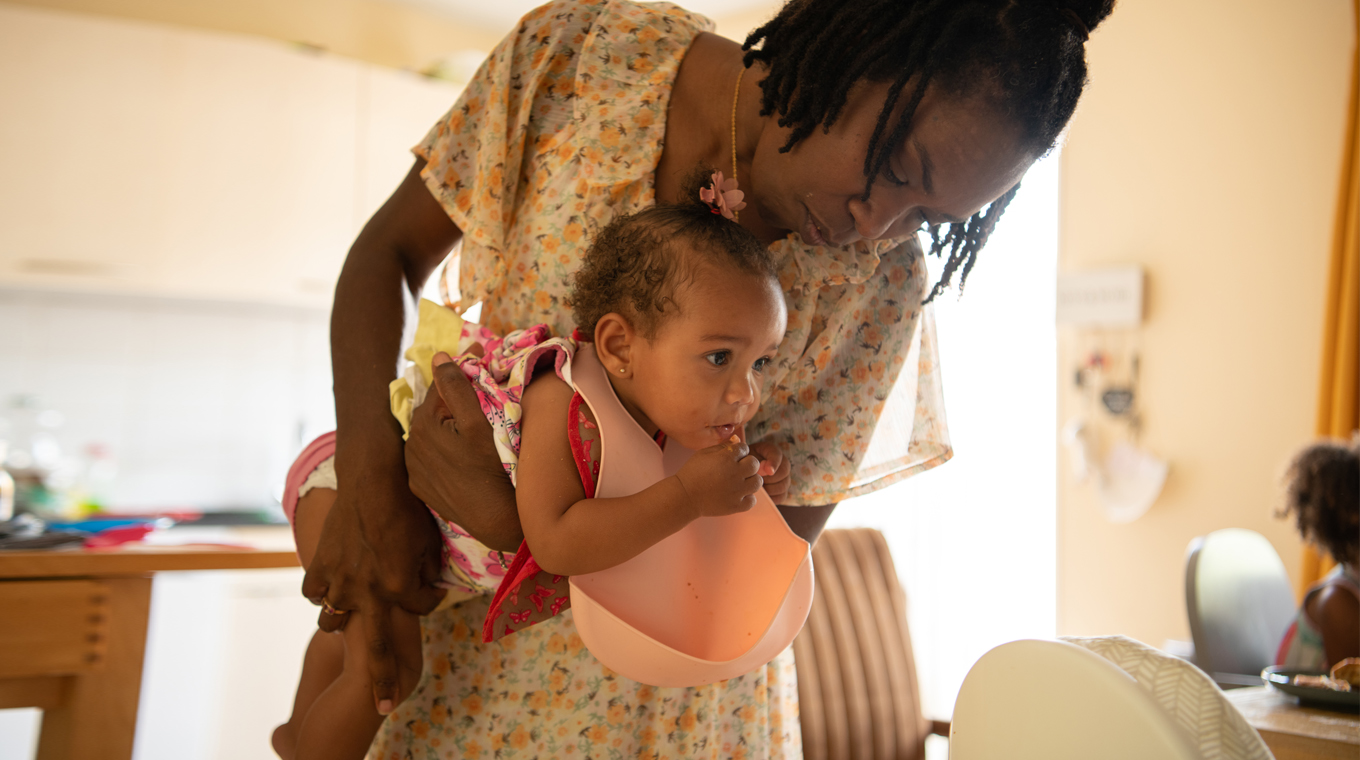
In this article
September is Baby Safety Awareness Month, and it's a great time to turn our attention to one of the common questions we see: what to do if a baby is choking? Choking is very common, with one child dying from choking every five days. In fact, more than 12,000 kids are taken to emergency rooms each year because of a food-choking incident. Knowing what to do if your baby is choking is a matter of life and death. This guide will help you know what signs to look for and what to do if your child is choking.
Be aware: Signs of a baby choking

Choking happens when an object obstructs the airflow and prevents you from breathing. There is a difference between heavy coughing and choking. With heavy coughing, a child will “huff out extreme sounds, along with excessive air,” Christine Kingsley, an advanced practice registered nurse, told Mom.com.
She elaborated that the difference between choking and coughing is that when your child is choking, no noises will come out. “A choking child won’t be able to cry, cough, or make any other noise, let alone breathe, due to the blockage.”
Parents should understand the differences and be prepared to react quickly if their child is choking. A child that is coughing doesn’t need immediate intervention but should be observed to make sure the situation doesn’t escalate into choking.
What to do if a baby is choking

Time is of the essence when dealing with a choking toddler, so read through these steps a few times to remember them. You won’t have time to Google what to do while your child is choking.
- The first step in helping a choking child is to perform what are called “back blows.” Turn the toddler so they are facing down over your knee, bracing the child with your non-dominant hand.
- With the base of your palm, give five hardy blows onto their back between their should blades. These blows should be firm as you attempt to dislodge what is causing the choking.
If the object has not come out, you will move on to “abdominal thrusts.” These are like the Heimlich Maneuver but for a toddler.
- Stand the toddler up and place your fist in the soft part of their stomach just below the sternum.
- With your other hand, squeeze the fist in and up to generate thrust from the oxygen in the lungs to expel the item. Do this five times.
- Alternate between five back blows and five abdominal thrusts until the object is dislodged.
Common objects that cause baby choking

Toddlers can choke on any number of things. They are learning to chew solid foods and will place just about anything in their mouth, especially when teething. These are all choking hazards. Parents should know that hard, smooth foods are often the culprit in choking incidents.
These foods include:
- Nuts
- Sunflower seeds
- Watermelon
- Cherries with pits
- Raw carrots, peas, and celery
- Popcorn
- Hard candy
- Raw apples and pears
Additionally, some soft foods can be dangerous and should be cut into small pieces or avoided:
- Cheese cubes
- Hot dogs
- Sausages
- Grapes
- Caramels
Parents should encourage kids to chew thoroughly before swallowing to teach them sound and safe eating habits. Small toys and objects can be swallowed and lead to choking as well. Common objects include:
- Balloons
- Toys with small parts
- Doll accessories
- Batteries
- Erasers
- Marbles
- Broken crayons
- Jewelry
- Magnets
- Bottle caps
- Coins
Food and common objects aren’t the only culprit when it comes to choking. It’s important to note that choking is not always related to an object the baby swallows, as mom Melissa Libby explained to Mom.com. Libby and her husband were out shopping, and she had her infant daughter in her infant carrier.
“Upon entering the store, I look down and see her lips are blue. She didn’t have a bottle, so we didn’t realize that she could have been choking,” Libby recalled. While the appropriate measures were taken by the store’s pharmacist to get her baby breathing again, Melissa and her husband didn’t know how the baby was choking.
After a ride via ambulance to the emergency room, Melissa’s daughter was diagnosed with BRUE (brief resolved unexplained event). The doctors believe that her baby had acid reflux that led to her choking. While the situation was resolved with a happy ending, Melissa said it was terrifying not being able to help her child.




